Primate Enrichment at PASA Wildlife Centers
by Alexandra Reddy
Pan African Sanctuary Alliance members have rescued many chimpanzees, gorillas and monkeys from devastating situations. In 2019 alone, the Alliance rescued over 300 primates from cruelty and reintroduced 195 primates back to the wild. Many of these animals were orphaned by bushmeat hunters, kept illegally as pets, or smuggled outside of Africa. They have endured a great deal of trauma.
For as much abuse as some humans have inflicted upon these animals – many of which are endangered or critically endangered – there are countless numbers of champions working to brighten their lives.
Ideally, these rescued animals can be reintroduced to the wild, but this is not always an option. 7 to 10 years are often required to gain the many skills essential for living in harsh forest conditions, and even that may not be enough time for primates that were torn from the forest in early life. (Read more about a recent reintroduction by PASA-member Ape Action Africa in Cameroon here.) When animals cannot be reintroduced, the wildlife centers’ expert staff are prepared to provide lifelong care.
This commitment to care includes: proper nutrition, specialized veterinary care and something equally important: enrichment!
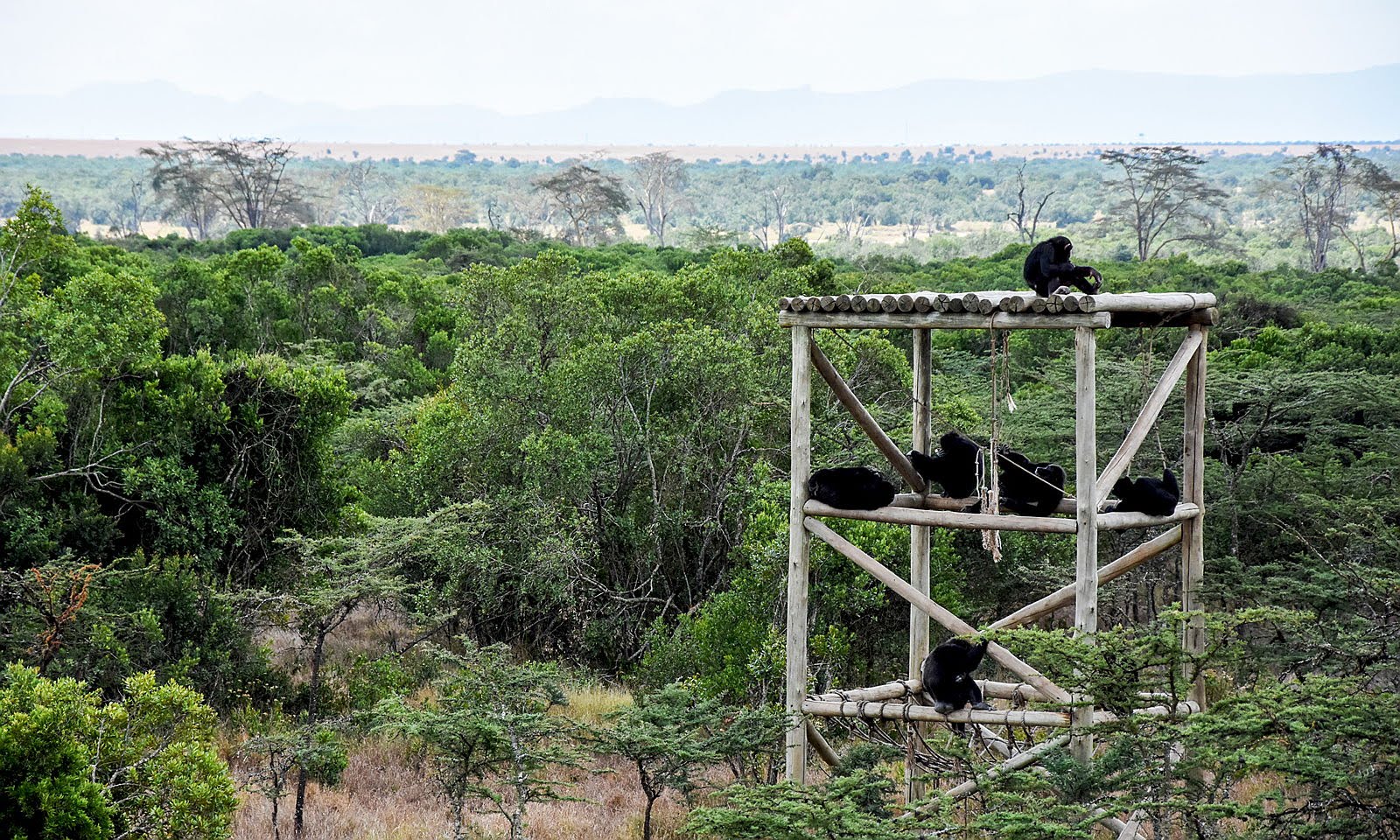
Climbing structure at PASA-member Sweetwaters Chimpanzee Sanctuary in Kenya.
What is Enrichment?
Enrichment is anything that encourages an animals´ natural behaviors and improves their quality of life. Enrichment can include group living inanimate objects, habitat additions and more. Enrichment gives animals the opportunity to exercise choice, and allows them to control their environment while engaging in healthy, species-typical behaviors. Enrichment can come in all shapes and sizes and ultimately benefits an animals´ psychological well-being. Below are several examples of enrichment from PASA-member sanctuaries.
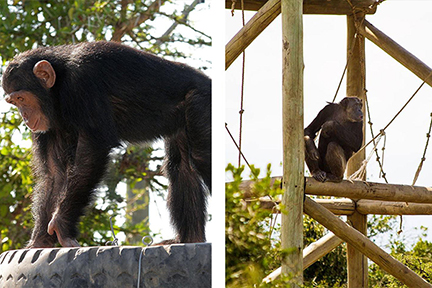
Sweetwaters Chimpanzee Sanctuary offers tires and climbing structures as enrichment.
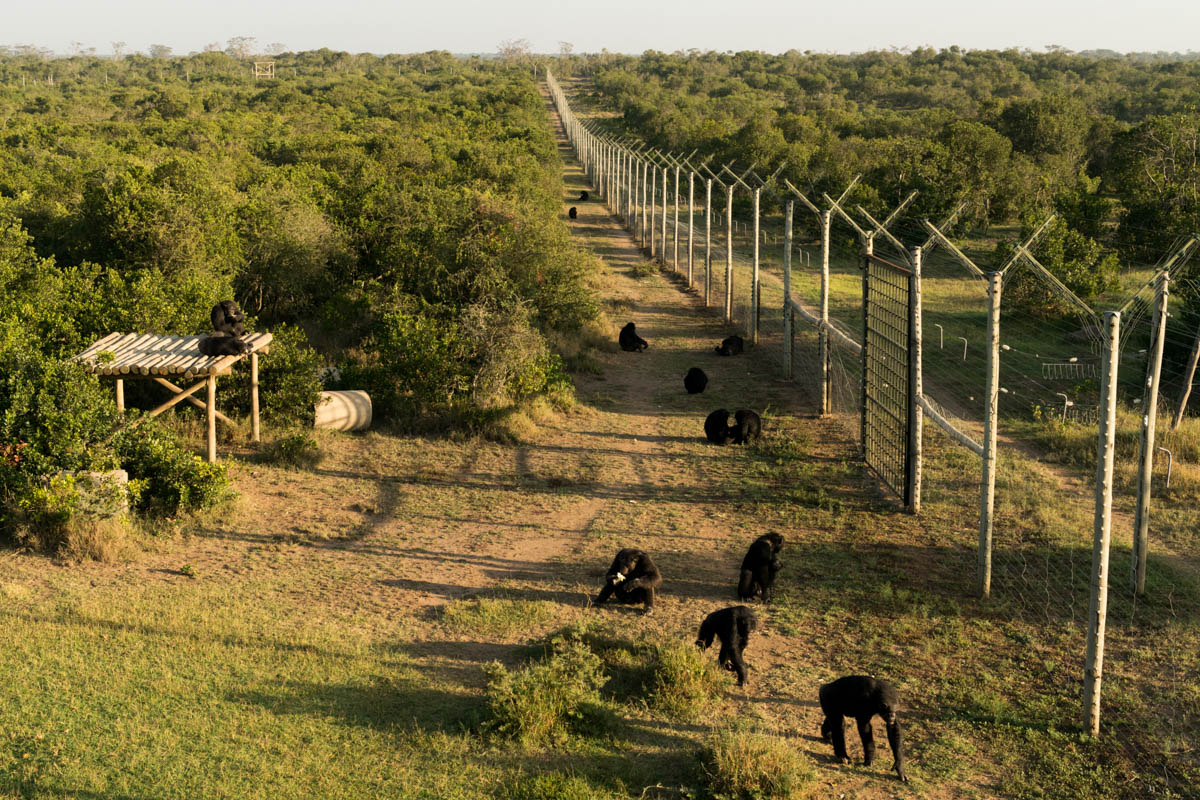
Chimpanzees at Sweetwaters Chimpanzee Sanctuary catch their breakfast of papaya, oranges and bananas. (Photo by Adriane Ohanesian.)
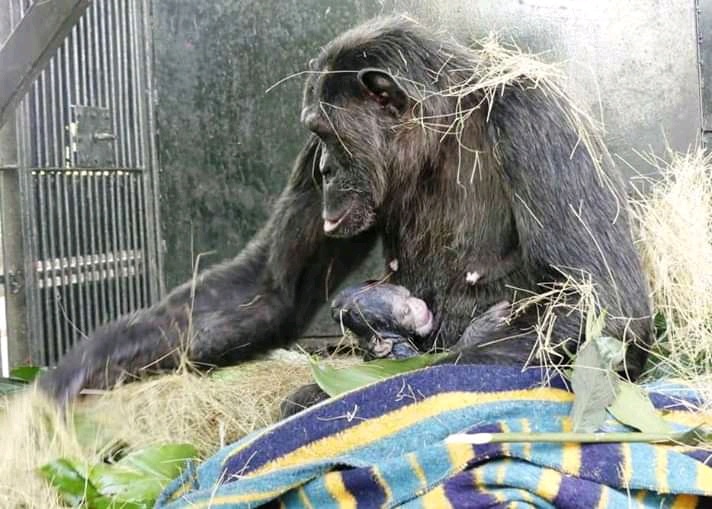
Chimpanzee Natasha with her newborn baby prepares a nest furnished with blankets, hay and leaves at Ngamba Island Sanctuary, a PASA-member in Uganda.
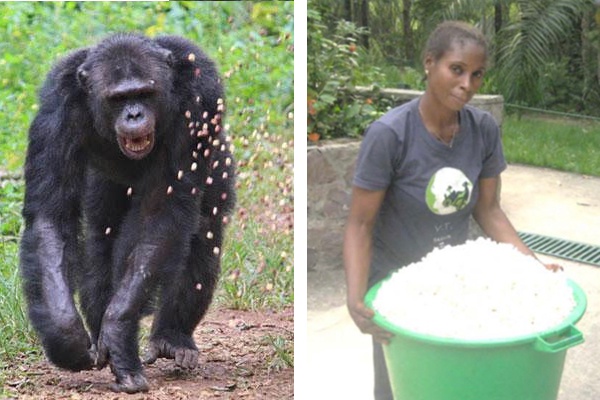
Left: Chimpanzee Zachary, at PASA-member Sanaga-Yong Chimpanzee Rescue in Cameroon’s remote Mbargue Forest, is excited to receive his peanuts. Right: The team at Lola ya Bonobo prepares popcorn to be foraged.
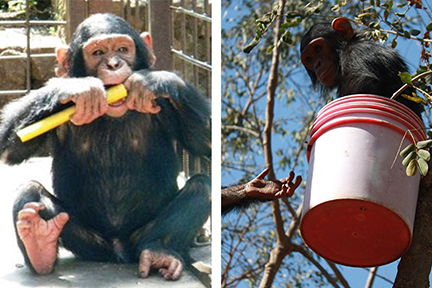
Left: PASA-member Lwiro Primate Rehabilitation Center in DRC provides pieces of hose pipe loaded with jam and sweet treats inside. Chimpanzees will reach their fingers in or use a stick as a tool to retrieve the healthy snack. Right: A young chimpanzee at PASA-member J.A.C.K. Chimpanzee Sanctuary explores a bucket.
Creating Enrichment: Teamwork & Creativity
Enrichment typically requires a fair amount of preparation before it can be given to animals. For great apes, it is beneficial to use reusable, durable items that can withstand the strength of these powerful animals. This means that lengthy construction and labor are often required. At the Ngamba Island Chimpanzee Sanctuary, 400 students from local school wildlife clubs learned the benefits that enrichment brings to animals first hand. These students worked alongside staff members to help construct balls, tire climbers, noise makers and feeding puzzles for the chimpanzees at Ngamba Island.
Summary
Providing opportunities for enrichment to primates helps promote the animals’ behavioral health and overall well-being. These animals face major threats from humans such as habitat loss, poaching, human-ape conflicts and infectious diseases such as Ebola and now Covid-19. Fortunately, dedicated, knowledgeable and creative professionals at PASA´s member wildlife centers work tirelessly to enrich the lives of the primates in their care. Help support their incredible efforts by making a donation. Thank you!
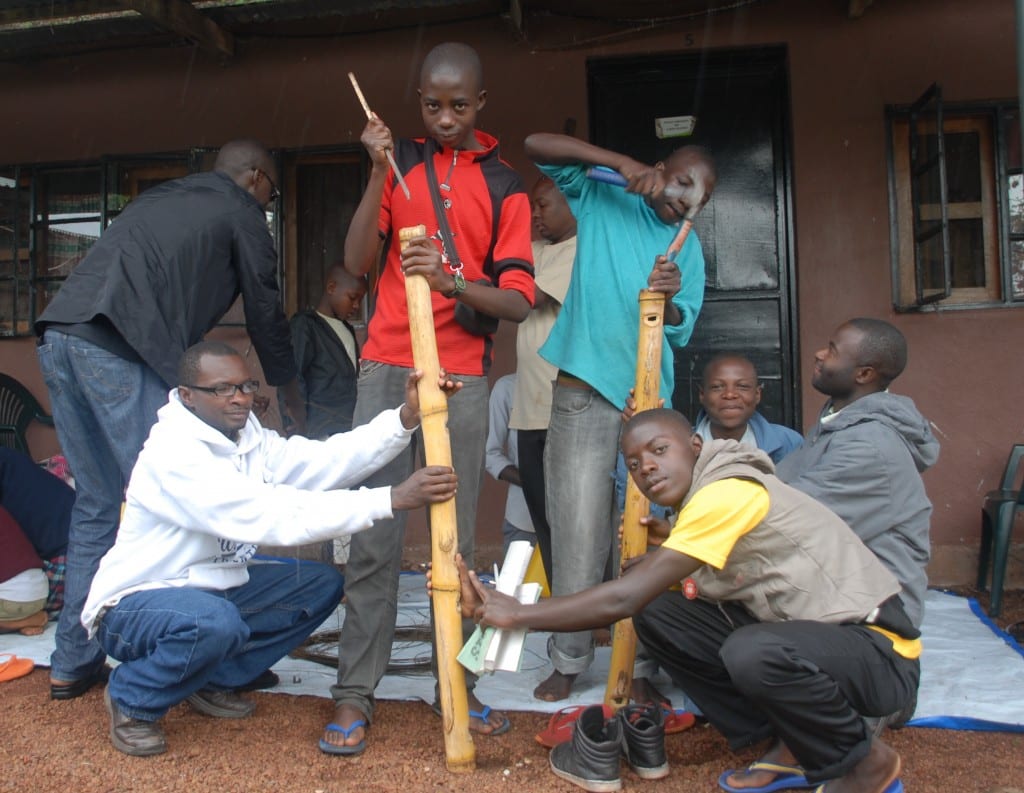
Students and Staff at Ngamba Island Chimpanzee Sanctuary fill feeding puzzles with honey and peanut butter.
